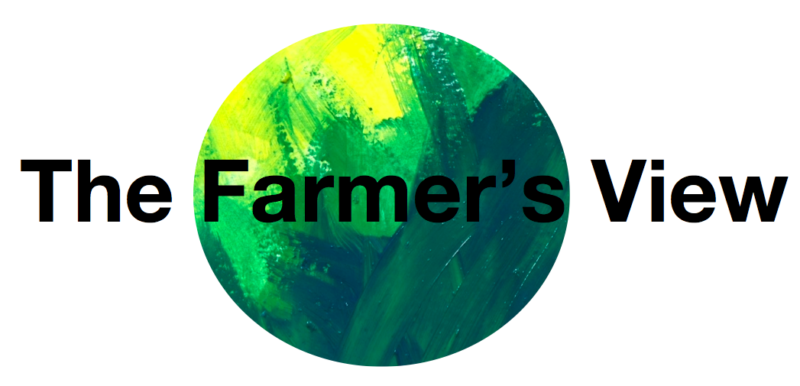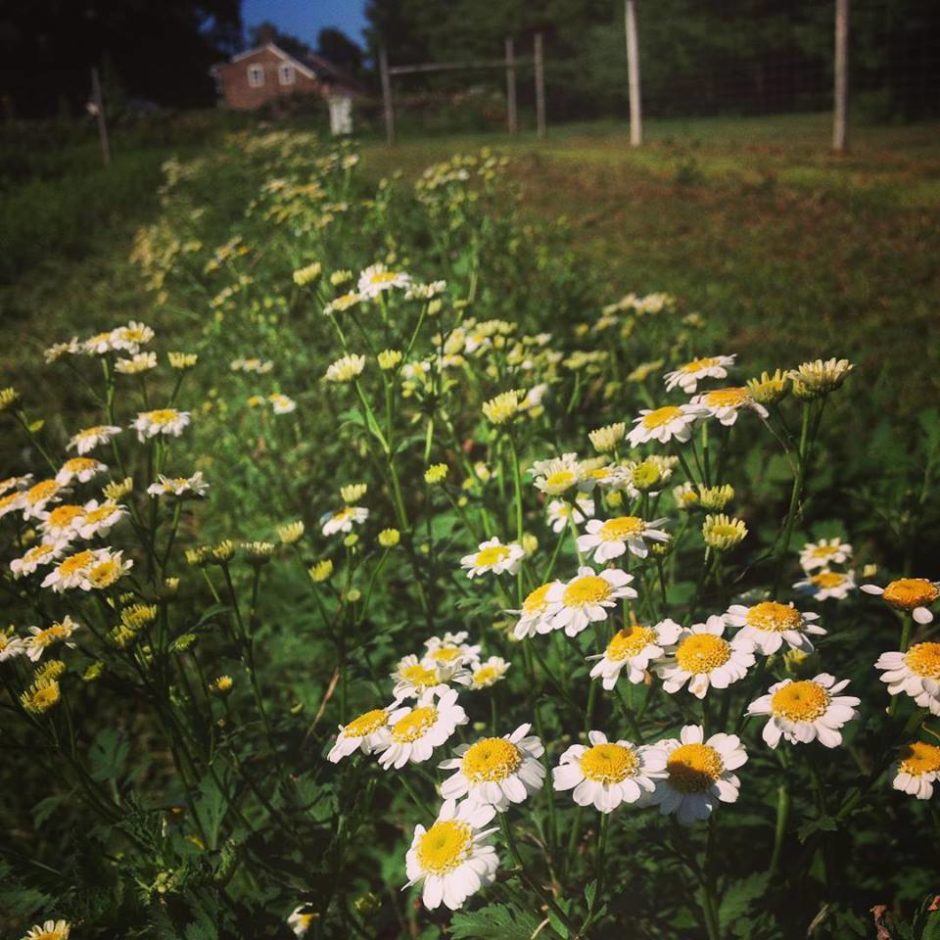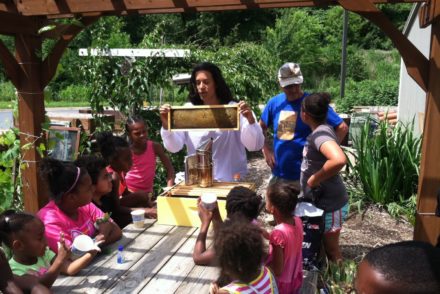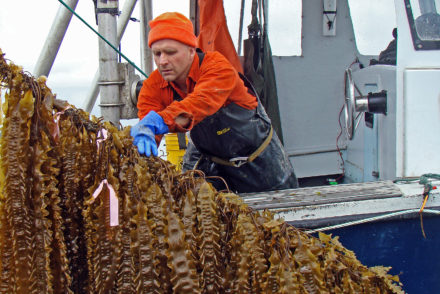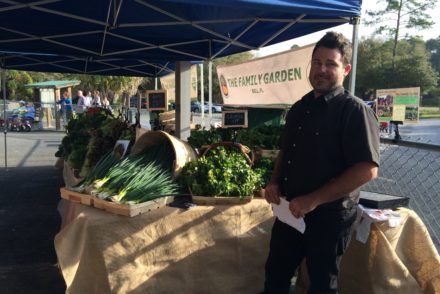“Farming is not just a career: it is my entire life. It is the spiritual expression of my own existence. It is my contribution to my community. It is the expression of love between Jamie and I. It grounds us to this place, and this moment, in a way that nothing else can.”
Amanda Midkiff’s dream of attending law school faded after she spent a summer volunteering on a vegetable farm. Now, as owner of Locust Light Farm, Amanda and her partner, Jamie Sims, grow medicinal herbs and are pioneering a Community Supported Wellness program in Pennsylvania.
Describe your farm.
We grow medicinal herbs on just over one acre of a larger 75 acre property. We live in a small cottage
on the property. The land has been organically managed and farmed since William Penn “purchased” it from the Leni Lenape as part of Penn’s Purchase; the family who currently owns the land is only the second family to own it since Penn. It has been in continuous agricultural production since. Most of the land is now in hay production, but also includes a forest, woodland pond, and a beautiful creek. The main house and barn on the property date back to 1702, and we store our tools in the original smokehouse. It is a small colonial estate, and still feels that way.
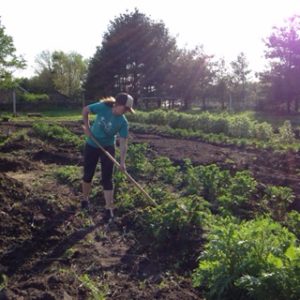
The farm crew consists of me, who works full-time on the farm; my partner Jamie, who works 3-4 days a week on the farm, an employee who works 1 day a week, and two apprentices who each work 1 day a week.
We grow about 70 varieties of medicinal herbs. This includes many commonly used herbs such as St. Johns Wort, echinacea, chamomile, thyme, rosemary, and lavender; as well as lesser-known herbs such as motherwort, feverfew, Siberian Balm, marshmallow, comfrey, and NJ Tea. Different herbs are harvested for different parts of the plant: roots, leaves, flower, or seeds. Some plants are harvested for root and leaf, flower and root, etc. We dry the herbs and process them into herbal products such as tinctures (herbal extracts), herb-infused oils and vinegars, balms and salves, elixirs, teas, bath blends, and more.
We sell these herbs primarily through our CSA-style program, which we call a Community Supported Wellness program. Members join the farm and receive a package of herbal products once a month. We offer pickups at many local farms and also ship shares directly to members. We offer two types of shares: Wellness Shares and Decadence Shares. Wellness Shares are medicinally focused and include tea blends, tinctures, massage oils, and salves. Wellness Share members receive four products a month and are able to customize their shares to their personal needs. Wellness Share members really build up their own personal apothecary over the season, and will soon have a whole cabinet full of herbal remedies. Shares come with quite a bit of educational information, so members get a broad introduction to the realm of herbal medicine. Decadence Shares are focused on culinary and body products. They include herbal massage oils, bath salts, herb-infused vinegars and olive oils, herbal honeys, herbal liqueurs, facial products, etc. The guiding premise behind the Decadence Share is that beauty itself is healing, and the products in the share reflect that. Decadence Share members receive three products per month.
We also sell products online through our website. We are moving toward selling bulk dried herbs as well.
Each day on our farm is different. Because we also make herbal products, we tend to have two types of days: fieldwork days and processing days. Fieldwork days involve many of the same tasks that vegetable farmers undertake: seeding, planting, weeding, and harvesting. The difference comes in the nature of the plants themselves.
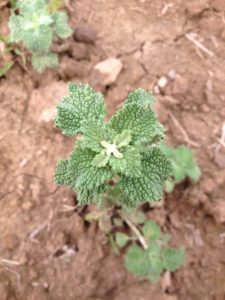 An exciting challenge in farming medicinal herbs is that you need to simulate their natural growing conditions in order for them to grow well and be medicinally potent. Vegetables and humans have co-evolved over centuries. We have a thorough understanding how much fertility, water, and warmth vegetables need in order to grow well. We know how to get their seeds to germinate. Germinating vegetable seeds is akin to getting domesticated animals to breed in captivity: it’s not that hard, because that’s how the animals have evolved to breed. It’s much more difficult to get zoo animals to breed in captivity because they’re one step away from being wild. Many medicinal herbs are also a few generations away from being wild. To convince their seeds to germinate, the farmer needs to study how they germinate in the wild. Do they experience a winter of freezing and thawing before they germinate? A fire? Digestion through an animal’s intestines? Each herb has a different set of requirements.
An exciting challenge in farming medicinal herbs is that you need to simulate their natural growing conditions in order for them to grow well and be medicinally potent. Vegetables and humans have co-evolved over centuries. We have a thorough understanding how much fertility, water, and warmth vegetables need in order to grow well. We know how to get their seeds to germinate. Germinating vegetable seeds is akin to getting domesticated animals to breed in captivity: it’s not that hard, because that’s how the animals have evolved to breed. It’s much more difficult to get zoo animals to breed in captivity because they’re one step away from being wild. Many medicinal herbs are also a few generations away from being wild. To convince their seeds to germinate, the farmer needs to study how they germinate in the wild. Do they experience a winter of freezing and thawing before they germinate? A fire? Digestion through an animal’s intestines? Each herb has a different set of requirements.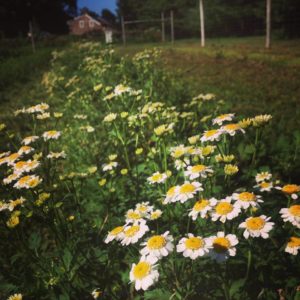
Once the herbs are growing, the challenge continues. For vegetables, we know that if the soil contains nutrients, the vegetable is taking up the nutrients into its body, and when we eat the plant we are getting the nutrients. The situation with herbs is a bit different. Many herbs become medicinally potent because their harsh, wild, environment activates their immune system. When we harvest and use the herb, we want to be consuming the benefits of the plant’s immune system. Coddled herbs will not always be medicinally potent. Some herbs need to experience drought conditions, poor soil, swampy conditions, animal predation, etc. Farming herbs means getting to know each of your crops very well.
The more I work with the herbs, the more strongly I feel that using local herbs is important for healing. Not only are many of the commercially available herbs quite old and of lower quality, but some herbal supplements don’t even contain the advertised herb. Beyond that though, I’ve come to feel that using herbs that have experienced the same seasons and weather and region as ourselves is simply more powerful. It is exciting to use exotic herbs from all over the world, but a plant that grew and was harvested in India, say, will be less energetically aligned with someone who lives in the mid-Atlantic than a plant that lived its life in Pennsylvania. (We talk a lot about “energetics” in the world of herbalism.)
Growing medicinal herbs on a small scale is important for community wellness, and it’s important because so few people do it. This is learning that needs to be developed (or remembered) and shared. There is opportunity for innovation in this field.
We also have processing days. First, we take the dried herbs out of our drying loft. Next, we “garble” them: we rub them through screens to de-stem them and cut them to size. We store these herbs in airtight containers in our apothecary. Some we will package and sell wholesale. Others, we will blend together to make a tea or an herbal smoking blend. Some we will set to tincture, or use to make an oil, or one of the other types of products that we make. Processing days involve a lot of kitchen time: setting herbs to tincture in alcohol, straining herbs that have tinctured for four weeks, blending tinctures and honey to make elixirs, infusing herbs into oil to make massage oils and balms. Of course, all these activities also include quite a bit of wiping up oil off the counter, washing out Mason jars, searching for the proper size funnel, filling out labels, washing jars again, cleaning out the strainer, emptying our compost bucket, etc. When our products are ready, we bottle, package, and label them. Naming products and designing labels has been an interesting new challenge: as a veggie farmer, I was not accustomed to marketing my crops in such an intensive, specific way. It’s often difficult to come up with the best name for a tincture blend or tea blend: should I give it a humorous name? An elegant name? A straightforward name? Should the label be simple? Beautiful? Scientific?
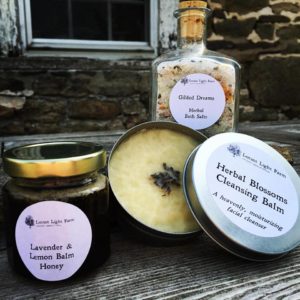
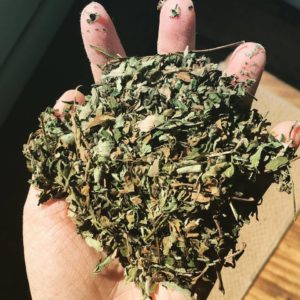
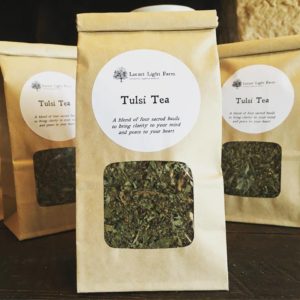
What led you to farming?
When I was in college (at Lehigh University), I was planning on going to law school. I was interested in working with international agricultural trade legislation and global economics as it related to agriculture. I wanted to work on agricultural trade between the United States and Latin America. I was interested in the way that trade legislation impacts the lives of growers in Mexico and Central America and wanted to advocate for growers’ rights. I decided to volunteer on a vegetable farm to learn what life was like for vegetable growers. I fell in love with being outside every day, with using my body and expanding my capabilities, with the food culture, with the incredible people I was meeting. I have farmed every season since my first summer volunteering (seven years).
Farming is a way of life that is well-aligned with my personal values. It allows me to be a producer as well as a consumer, and to be connected to my consumption in a way that feels responsible to me. It allows me to help others to consume more responsibly by providing my community with sustainable consumption choices. Being educated about global and local issues doesn’t have much effect if we can’t actually change the way that we consume. In order to do that, people need to have different choices available to them.
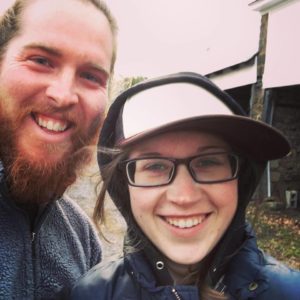 Farming allows me to have one holistic, integrated life. When I was graduating from college and looking ahead to my future, I balked at the idea of having a compartmentalized life in which partner, family, physical activity, career, creativity, spirituality, community service, and leisure were all occurring in isolated segments. It sounds overwhelming to try to fit all those activities into different time slots! As a farmer, especially a farmer who farms with my partner, family and career meld beautifully, flowing into my leisure time, demanding my physical fitness, and opening space for my creative expression. Farming is not just a career: it is my entire life. It is the spiritual expression of my own existence. It is my contribution to my community. It is the expression of love between Jamie and I. It grounds us to this place, and this moment, in a way that nothing else can. Sustainable farming is a way of living gently on the earth that supports my values of environmental stewardship. I come from a family of dairy farmers and was raised with the idea that stewardship of a piece of land is one of the most worthy pursuits to which one can attend. This is a task not just for one person, but for a whole community.
Farming allows me to have one holistic, integrated life. When I was graduating from college and looking ahead to my future, I balked at the idea of having a compartmentalized life in which partner, family, physical activity, career, creativity, spirituality, community service, and leisure were all occurring in isolated segments. It sounds overwhelming to try to fit all those activities into different time slots! As a farmer, especially a farmer who farms with my partner, family and career meld beautifully, flowing into my leisure time, demanding my physical fitness, and opening space for my creative expression. Farming is not just a career: it is my entire life. It is the spiritual expression of my own existence. It is my contribution to my community. It is the expression of love between Jamie and I. It grounds us to this place, and this moment, in a way that nothing else can. Sustainable farming is a way of living gently on the earth that supports my values of environmental stewardship. I come from a family of dairy farmers and was raised with the idea that stewardship of a piece of land is one of the most worthy pursuits to which one can attend. This is a task not just for one person, but for a whole community.
Perhaps most personally, farming allows me to spend most of my days nestled in a world that feels spiritually alive to me. The plants are sacred teachers, and all of nature is resonating with wisdom and lessons. The more I work with plants, the more my own intuition develops. The more peaceful, and healthy, I feel.
What kind of training did you have as a farmer?
I did a number of summer-long internships on organic vegetable farms, most notably at the Community Supported Garden at Genesis Farms in Blairstown, NJ. They have one of the oldest CSAs in the country and a well-established apprenticeship program. The head farmers there are deeply committed to educating the next generation of farmers and are talented, wise, and supportive souls. After college I spent three years working with Malaika Spencer of Roots to River Farm who, though just two years older than me, is certainly my most influential mentor. I helped her start and manage Roots to River for its first two seasons, and learned so much from her about starting a small business, running an effective farm, managing a farm crew, creating a healthy work environment, marketing, and striving for a healthy work-life balance. I think that working on farms is the best way to learn about farming. Books can be helpful (and I absolutely love them), however, learning about farming and learning to farm are different things. You can’t learn it without doing it. In the medicinal herb farming world there is not much to be had by way of herb farming internships because there are so few herb farms, which is why I’ve opened up Locust Light to part-time apprentices even though we’re a young farm. I want people to be able to learn as much about herbs as I can offer. There are a few very helpful books: The Organic Medicinal Herb Farmer by Jeff and Melanie Carpenter and The Chinese Medicinal Herb Farm by Peg Shaffer.
How have you dealt with the challenges of financing the farm and providing for your own livelihood?
I started Locust Light with a $10,000 loan that did not include money needed to support myself, just to purchase all the materials needed to start the business. I did not have savings because I have only worked as a farmer since graduating college, which I felt was necessary to do in order to learn how to farm. Working as a farmer usually does not mean that you are able to save money. Last year, my first season, I was operating Locust Light on my own, with no employees, while working a number of different part-time jobs to support myself. It was difficult to find a job that would work along with my farming schedule and also allow me the flexibility to run a business (say, take phone calls, respond to emails promptly, arrange meetings, water the greenhouse at midday). This also made it extremely difficult to take a day off, or even an evening off. When you have very little income, it is difficult to decide to do anything that doesn’t involve directly gaining income. Deciding to spend the day with family or friends feels like a huge sacrifice, and that really begins to weigh on you.
This season, I’m transitioning to supporting myself more fully from the farm and from activities such as teaching herbalism workshops and yoga. It’s working, but it’s very challenging. We are constantly evaluating our business to help it to be more profitable and moving forward on faith that it will continue to grow. I have definitely been using my own herbal products to support me through the anxiety and stress of building financial stability from the ground up. Of course, I can’t overstate how incredible it is to have a partner who is now tackling the project of Locust Light with me and helping me to stay steady through all the ups and downs. Jamie is incredibly supportive, wise, and strong. Many others in my life have been generous with volunteering on the farm and supporting the farm in a variety of ways.
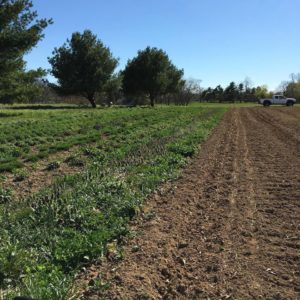
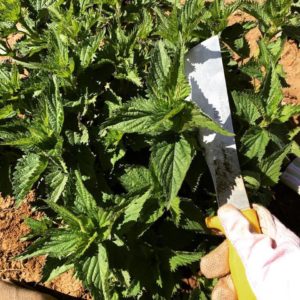
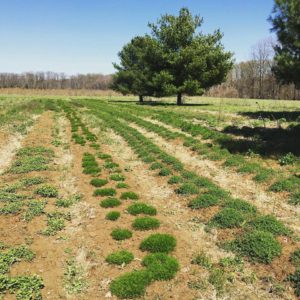
What changes would you like to see in agri/food culture right now?
The concept of buying local has become trendy, but I want consumers to truly commit to buying local whenever possible. This means food, it means medicine; it means craft beer and independent bookstores and small hardware stores. The more customers buy products from local farms, the more their money stays in the local economy. The more they help farming to be a sustainable livelihood, which means landowners can afford to not sell their land to housing developers and strip malls. I simply want people to truly buy from local farms. Sometimes local food or local products cost a few dollars more. It’s not that most people “can’t afford” that; they just squabble over the difference because they don’t see it as a priority, and it doesn’t come wrapped in plastic. People don’t balk at the cost of television subscriptions, smartphone upgrades, new clothing, a candy bar. They’ve pre-decided that they will spend money on those things, so they do. I want that to occur in local economies. Trust me, farmers and local producers are charging as little as they possibly can and are making very little profit off of what they’re selling. They’re not trying to cheat you or swindle you. They’re just trying to survive.
Photos courtesy of Amanda Midkiff.
